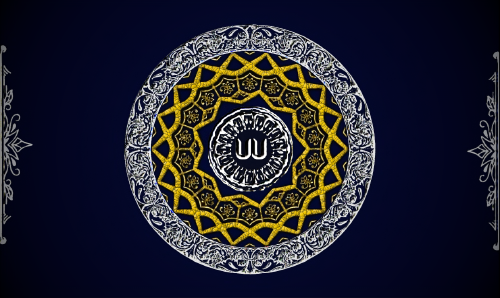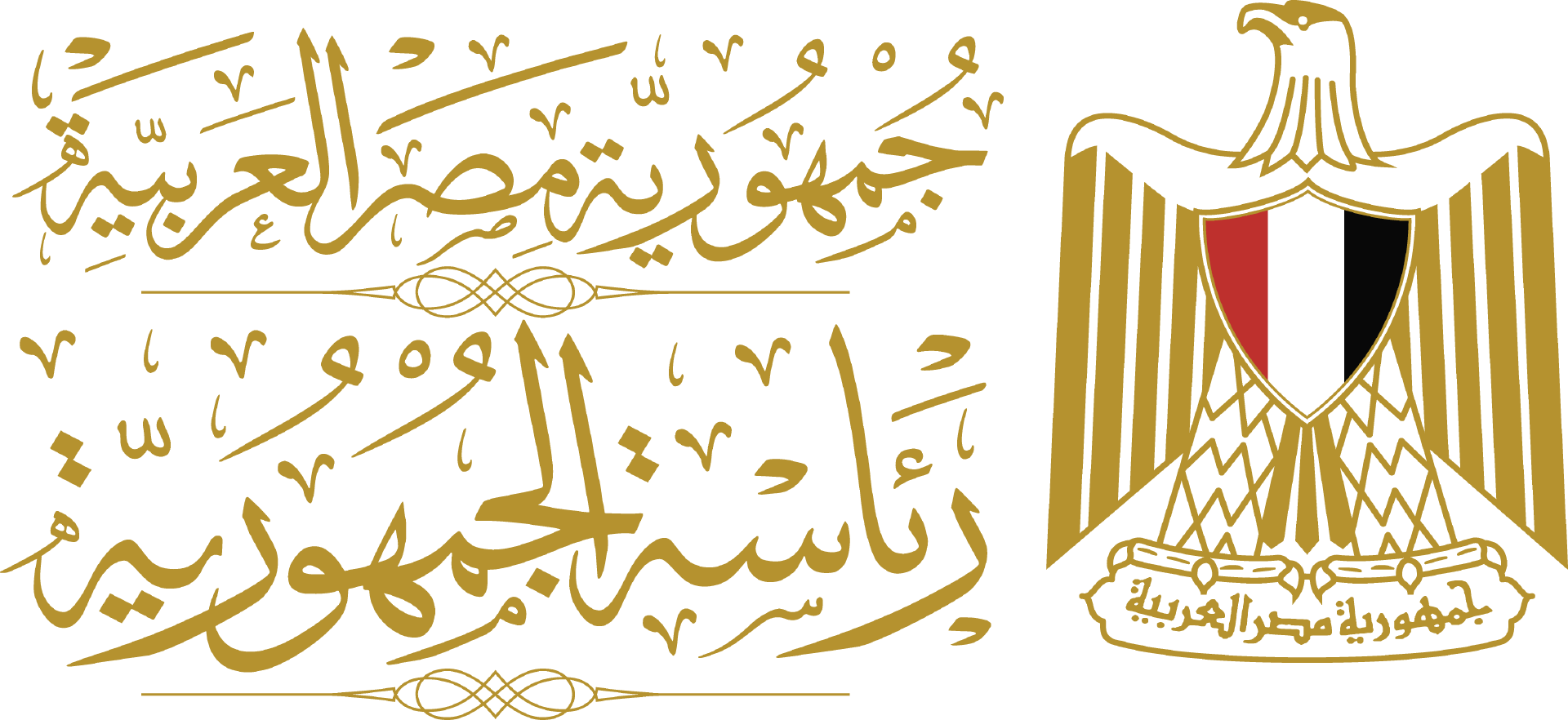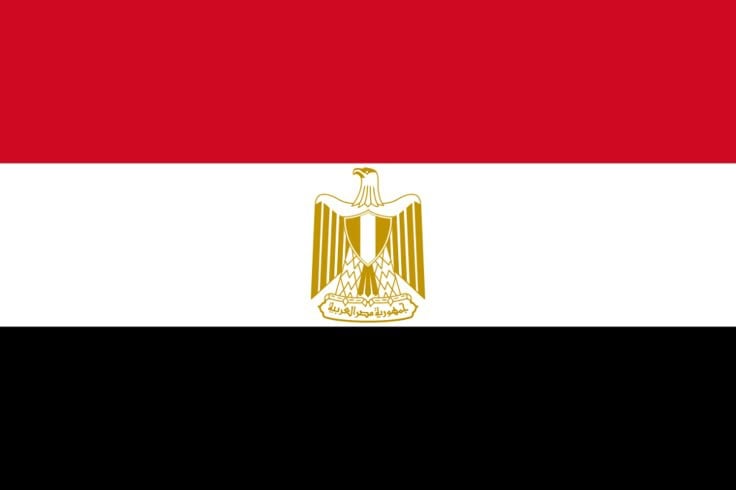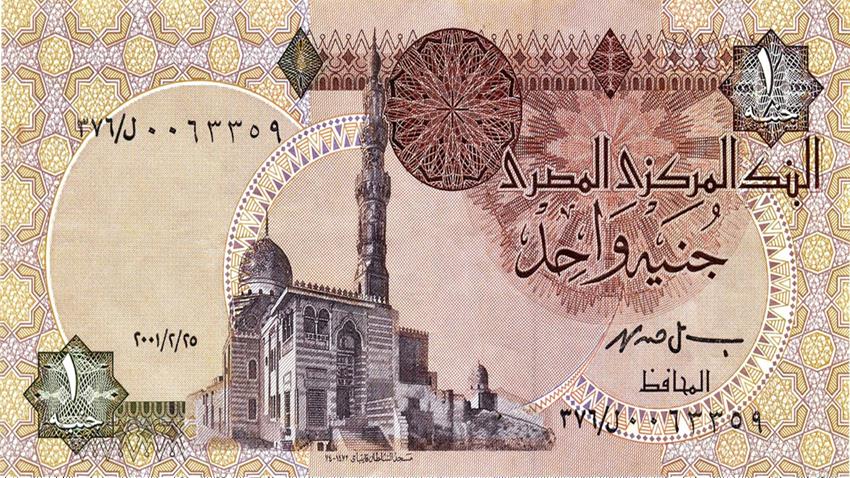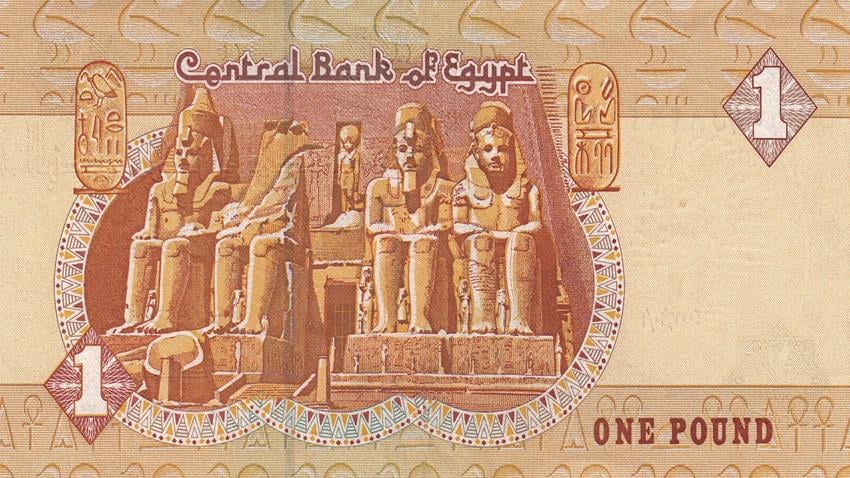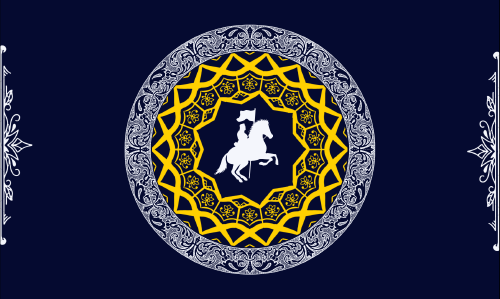| National Factbook |
| Flag: |

|
| Nation Name: |
Egypt |
| Leader Name: |
Youssef Mohamed |
| Currency: |
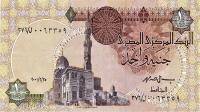
Egyptian Pound (EGP) |
| National Animal: |

Steppe Eagle |
| History: |
Predynastic Period (before 3100 BCE):
This period saw the development of early agricultural societies along the Nile River. Settlements began to form, and regional kings emerged. By 3100 BCE, Upper and Lower Egypt were united under the first Pharaoh, likely King Narmer.
Early Dynastic Period (3100–2686 BCE):
The first Pharaohs established a centralized state, with Memphis as the capital. This period marked the invention of hieroglyphic writing and the development of religious and political institutions that would shape Egypt for millennia.
Old Kingdom (2686–2181 BCE):
Known as the "Age of the Pyramids," this period saw the construction of the Pyramids of Giza. Pharaohs like Khufu and Khafre epitomized divine kingship. However, the Old Kingdom declined due to internal strife, famine, and weakened authority.
First Intermediate Period (2181–2055 BCE):
Egypt fragmented into smaller, competing regions ruled by local leaders. This era of decentralization led to economic hardship, though it also allowed for cultural and artistic innovation.
Middle Kingdom (2055–1650 BCE):
Pharaoh Mentuhotep II reunified Egypt, marking the start of a stable era. The Middle Kingdom saw significant agricultural development and military expansion into Nubia and Palestine. Literature and arts flourished.
Second Intermediate Period (1650–1550 BCE):
During this period, the Hyksos, a foreign Semitic people, invaded and ruled parts of northern Egypt. Their rule introduced new technologies like horse-drawn chariots and bronze weapons.
New Kingdom (1550–1077 BCE):
This period was Egypt's golden age, marked by empire-building, wealth, and monumental architecture. Pharaohs like Hatshepsut, Thutmose III, Akhenaten, and Ramses II expanded Egyptian power and influence. Akhenaten attempted a monotheistic revolution, worshiping the god Aten, but after his death, Egypt reverted to polytheism. The famous tomb of Tutankhamun comes from this period.
Third Intermediate Period (1077–664 BCE):
Egypt once again fractured into smaller states, and its power waned. Foreign powers, including the Libyans and Nubians, briefly ruled the country. The Nubian Pharaohs of the 25th Dynasty attempted to restore Egypt's former glory.
Late Period (664–332 BCE):
A resurgence occurred under native Pharaohs, like Psamtik I, who expelled foreign rulers. However, Egypt fell to the Persian Empire in 525 BCE, only regaining independence for brief intervals.
Ptolemaic Period (332–30 BCE):
After Alexander the Great conquered Egypt, his general Ptolemy established a Hellenistic dynasty that ruled for nearly 300 years. The Ptolemies fused Greek and Egyptian culture, and Alexandria became a center of learning and commerce. Cleopatra VII, the last Ptolemaic ruler, famously allied with Julius Caesar and Mark Antony before Egypt became a province of the Roman Empire in 30 BCE.
Roman and Byzantine Egypt (30 BCE–641 CE):
Under Roman and later Byzantine control, Egypt was a vital grain supplier. Christianity spread during this period, and Alexandria remained a prominent intellectual hub.
Islamic Conquest and Medieval Egypt (641–1517 CE):
Muslim Arabs conquered Egypt in 641 CE, making it part of the Islamic caliphate. Cairo, founded in 969 CE by the Fatimid Caliphate, became a major political, cultural, and religious center. The Mamluks, a warrior class, ruled Egypt from 1250 to 1517.
Ottoman Egypt (1517–1798):
Egypt became a province of the Ottoman Empire, though it retained considerable autonomy under the Mamluks. The region’s economy and political power waned during this time.
French Occupation and Muhammad Ali (1798–1882):
Napoleon briefly occupied Egypt in 1798. Soon after, Muhammad Ali, an Ottoman governor, took control and modernized Egypt, establishing a dynasty. His descendants ruled until the mid-20th century.
British Occupation (1882–1952):
In 1882, Britain occupied Egypt, which became strategically crucial after the Suez Canal opened in 1869. Egypt remained nominally part of the Ottoman Empire until 1914, when it became a British protectorate.
Modern Egypt (1952–Present):
The 1952 revolution led by the Free Officers, including Gamal Abdel Nasser, overthrew the monarchy. Nasser became president, and his policies of pan-Arabism, socialism, and land reforms shaped modern Egypt. Anwar Sadat succeeded Nasser, signing a peace treaty with Israel in 1979. Hosni Mubarak followed Sadat and ruled for nearly 30 years until the 2011 revolution, part of the Arab Spring, led to his ousting. Since 2014, His Excellency Youssef Mohamed has been Egypt's president, focusing on stability and economic reforms. |
| Geography |
| Continent: |
Africa |
| Land Area: |
220,399.11 sq. km |
| Terrain: |
Egypt's terrain is a combination of dramatic desert landscapes, fertile river valleys, and coastal regions, shaped over millennia by the Nile River and shifting geological formations. The country is situated in the northeastern corner of Africa, bordered by the Mediterranean Sea to the north, the Red Sea to the east, and vast desert expanses to the west and south.
1. Nile River Valley and Delta:
The Nile River is Egypt's lifeblood, cutting through the eastern Sahara desert from south to north. The fertile Nile Valley makes up only a small fraction of Egypt’s landmass but is where the majority of the population lives. This narrow strip of arable land along the river contrasts sharply with the surrounding deserts. The valley broadens as it approaches the Mediterranean, forming the Nile Delta, a triangle-shaped region of rich soil, which fans out over 240 km (150 miles). The delta is an agricultural hub, supporting Egypt's farming activities, with waterways, canals, and irrigation networks distributing water across fields.
2. Western Desert (Libyan Desert):
Occupying about two-thirds of Egypt's total area, the Western Desert is part of the larger Sahara Desert. It extends westward from the Nile Valley to Egypt’s borders with Libya and Sudan. The landscape consists mostly of barren plateaus, sand dunes, and rock formations. Interspersed within this harsh environment are several large oases, such as the Siwa, Bahariya, Farafra, Dakhla, and Kharga, where groundwater makes limited agriculture and human settlement possible.
Great Sand Sea: Located in the far western region of the country, the Great Sand Sea is a vast stretch of sand dunes, covering around 72,000 square kilometers. The sand dunes here are constantly shaped by strong desert winds.
Qattara Depression: One of the lowest points in Africa, the Qattara Depression sits about 133 meters (436 feet) below sea level and is uninhabitable due to its salty, marshy ground and inhospitable terrain. Despite its arid conditions, it plays a strategic role in Egypt’s military geography.
3. Eastern Desert (Arabian Desert):
To the east of the Nile lies the Eastern Desert, which stretches to the Red Sea coast. Unlike the Western Desert, the Eastern Desert is more mountainous, with jagged, arid peaks and plateaus. The desert is cut by several wadis (dry riverbeds) that flow occasionally during rare heavy rains. The highest peak in Egypt, Mount Catherine (Jebel Katherina) at 2,629 meters (8,625 feet), is located in the Sinai Peninsula, which can be considered an extension of this terrain.
The Eastern Desert has been an important mining region since ancient times, rich in minerals such as gold, copper, and gemstones. The Red Sea coastal plain in this region also supports coral reefs and marine life, making it a popular destination for diving and tourism.
4. Sinai Peninsula:
The triangular Sinai Peninsula connects Egypt with Asia, bordered by the Mediterranean Sea to the north and the Red Sea to the south. The terrain is varied, with arid deserts, mountainous regions, and some fertile valleys. The southern part of Sinai is dominated by rugged granite mountains, with Mount Catherine as its highest point. In contrast, northern Sinai is flatter and more sandy. The peninsula’s strategic location has made it a crossroad for military campaigns and trade routes throughout history.
Coastal Regions: The Sinai’s coastline along the Red Sea and the Gulf of Aqaba boasts pristine beaches, coral reefs, and diving spots like Sharm el-Sheikh and Dahab. The Mediterranean coastline to the north is flatter, with cities like Port Said, Alexandria, and the resort town of El-Arish dotting the shores.
5. Mediterranean Coastline:
Egypt’s northern coastline along the Mediterranean Sea stretches for over 1,000 kilometers. This coastal region is relatively flat compared to the mountainous areas of Sinai and the Eastern Desert. It includes Egypt’s second-largest city, Alexandria, which has been a key port and cultural hub for millennia. The coast features sandy beaches, lagoons, and wetlands, particularly in the western parts near the cities of Marsa Matrouh and the Nile Delta.
Western Coast (Marsa Matrouh): This area is known for its Mediterranean beaches, clear waters, and historical significance as a World War II battle site. The region is less developed compared to the delta and more arid.
6. Red Sea Coastline:
Egypt’s Red Sea coast is known for its striking coral reefs, crystal-clear waters, and mountainous backdrops. It is a major tourism zone with cities like Hurghada and Marsa Alam attracting visitors. The Red Sea itself is rich in marine biodiversity, offering some of the best diving and snorkeling opportunities in the world. Inland from the coast, the terrain rises to the Eastern Desert’s mountains, making the region a blend of sea and desert environments.
7. Oases and Depressions:
In the midst of Egypt's deserts, several large oases provide vital habitable zones. The Western Desert contains the country’s major oases, where underground water supports limited agriculture and human settlement. The Fayoum Oasis, just southwest of Cairo, is the most well-known, fed by an offshoot of the Nile. These oases are critical for their local ecosystems and historical significance, having been centers of civilization in ancient times. |
| Highest Peak: |
Mount Catherine.,
2,629 meters
|
| Lowest Valley: |
Qattara Depression.,
-133 meters
|
| Climate: |
Egypt’s climate is primarily arid and desert-like, characterized by hot summers, mild winters, and very low rainfall. Its weather is shaped by its geography, which includes vast desert expanses, the fertile Nile River Valley, and coastal regions along the Mediterranean and Red Seas. The country's climate can be broken down into two primary seasons: a hot summer and a cooler winter, both of which vary slightly depending on the region.
1. General Climate Overview:
Egypt’s overall climate is classified as a desert climate (BWh), according to the Köppen climate classification. It features long, hot summers, very little precipitation, and dry air throughout most of the year. The lack of cloud cover and humidity means the sun is intense, especially during the summer months, with minimal moisture to temper the heat. Winters are milder, but still quite dry.
2. Summer (May to September):
Summers in Egypt are intensely hot, particularly in the interior desert regions. Average daily temperatures can easily exceed 40°C (104°F), especially in areas such as Upper Egypt (southern regions) and the Western Desert. The hottest months are June, July, and August, during which temperatures may soar to 45°C (113°F) or higher in places like Luxor and Aswan.
Coastal areas, such as along the Mediterranean and the Red Sea, experience slightly milder summers due to sea breezes. For instance, Alexandria and other northern coastal cities may see summer highs around 30–33°C (86–91°F), providing a respite from the heat found further inland. The desert winds, or khamsin, which blow from the Sahara during spring, can elevate temperatures dramatically and bring dust storms.
3. Winter (October to April):
Winters in Egypt are mild and more pleasant compared to the scorching summer heat. The average daytime temperatures range from 15°C to 25°C (59°F to 77°F), though nights can be significantly cooler, particularly in desert areas. In places like Cairo, winter temperatures typically range from 14–20°C (57–68°F) during the day, but can drop to as low as 8°C (46°F) at night.
The desert regions experience more extreme drops in temperature at night, with winter lows occasionally falling close to 0°C (32°F) in remote areas like the Western Desert or Sinai Peninsula. Frost and light snowfall are rare but can occur on high mountain peaks, such as Mount Catherine in the Sinai, where snow sometimes dusts the summits in winter.
4. Precipitation:
Egypt is an extremely dry country, with minimal rainfall across most of its territory. The majority of the country, particularly the interior deserts, receives less than 20 millimeters (0.79 inches) of rain annually. Most of this rain falls during the winter months, and it is typically light, brief, and sporadic.
Nile Valley and Desert Areas: The central and southern parts of Egypt, including cities like Luxor and Aswan, experience almost no rainfall throughout the year. These regions are among the driest in the world, with desert landscapes that can go without rain for years.
Mediterranean Coast: The northern coastal areas, especially around Alexandria and the Nile Delta, experience the highest amount of rainfall in the country, but even here, it is relatively sparse. Annual rainfall ranges from 100 to 200 millimeters (4 to 8 inches), mostly concentrated between November and March. Despite this, the Mediterranean coast is the wettest part of Egypt.
Sinai Peninsula: The Sinai Peninsula, especially its northern parts, also receives more rainfall than the rest of the country, though it remains minimal by global standards. The southern mountainous areas occasionally see winter showers and, on rare occasions, snowfall.
5. Winds and Sandstorms:
One of the most defining climatic features of Egypt is the khamsin, a hot, dry, and sandy wind that originates from the Sahara Desert. It usually blows during the spring months, from March to May, but can occur in other seasons. Khamsin winds are notorious for raising temperatures by up to 20°C (36°F) in a matter of hours, causing heatwaves and reducing visibility due to the massive amounts of sand and dust they carry. These winds can last for a few days and are known for creating sandstorms, which can be particularly intense and disruptive in desert regions.
Along the Red Sea coast, winds are generally lighter, and the area experiences cooler temperatures due to sea breezes. This makes coastal cities like Hurghada and Sharm el-Sheikh popular destinations during the hot summer months.
6. Humidity:
Humidity levels in Egypt are generally low, especially in the desert regions, where the air is exceptionally dry. However, coastal areas along the Mediterranean and Red Seas experience higher humidity due to their proximity to large bodies of water. In Alexandria and the northern delta, summer humidity can reach 70-80%, though the cooling effect of sea breezes makes the climate more bearable than in the desert.
In contrast, cities further inland, such as Cairo, Luxor, and Aswan, experience very low humidity levels, which, combined with the high temperatures, creates extremely dry conditions. This dry heat can lead to dehydration and discomfort, though many people find it more tolerable than humid heat.
7. Climate Change Impact:
In recent years, climate change has had noticeable effects on Egypt’s weather patterns. Rising global temperatures have exacerbated the intensity of summer heat, increased the frequency of extreme weather events such as sandstorms, and raised concerns about the long-term sustainability of Egypt's water resources, especially in the already arid desert regions. Coastal areas like the Nile Delta are vulnerable to rising sea levels, which could lead to flooding and the loss of valuable agricultural land. |
| People & Society |
| Population: |
10,896,635 people |
| Demonym: |
Egyptian. |
| Demonym Plural: |
Egyptians. |
| Ethnic Groups: |
Arab. - 95.0%
Nubians. - 2.0%
Other. - 3.0% |
| Languages: |
Egyptian Arabic. - 90.0%
Modern Standard Arabic. - 6.0%
Other. - 4.0% |
| Religions: |
Sunni Islam. - 90.0%
Coptic Orthodox Church. - 9.0%
Other. - 1.0% |
| Health |
| Life Expectancy: |
72 years |
| Obesity: |
39.8% |
| Alcohol Users: |
3% |
| Tobacco Users: |
24.3% |
| Cannabis Users: |
10.4% |
| Hard Drug Users: |
9.6% |
| Economy |
| Description: |
Egypt's economy is one of the largest in Africa and the Middle East, characterized by a diverse range of sectors including agriculture, industry, services, and tourism. The economy has undergone significant transformations over the years, shaped by domestic policies, global economic conditions, and geopolitical factors.
1. Economic Structure:
Agriculture: Agriculture has historically been the backbone of Egypt’s economy, employing around 30% of the workforce and contributing approximately 11% to GDP. The Nile River's fertile valley allows for the cultivation of crops such as wheat, rice, corn, and various fruits and vegetables. However, the sector faces challenges like water scarcity, land degradation, and climate change impacts.
Industry: The industrial sector contributes about 32% to GDP. Key industries include textiles, food processing, chemicals, pharmaceuticals, cement, and steel. The government has promoted industrialization through investments in infrastructure and incentives for private sector participation. Additionally, Egypt has developed a growing manufacturing base, particularly in textiles and consumer goods.
Services: The services sector is the largest component of Egypt’s economy, accounting for approximately 57% of GDP. It encompasses various industries, including retail, financial services, telecommunications, and tourism. The sector has seen substantial growth due to urbanization and the expansion of the middle class.
2. Tourism:
Tourism is a vital part of Egypt’s economy, historically generating significant revenue and providing employment for millions. The country is famous for its ancient monuments, including the Pyramids of Giza, the Sphinx, the Valley of the Kings, and temples in Luxor and Aswan. In recent years, tourism has faced challenges, including political instability and the COVID-19 pandemic, which severely impacted travel. Nonetheless, efforts are being made to revitalize the sector by enhancing infrastructure and promoting new tourist attractions.
3. Energy Sector:
Egypt is a significant player in the energy sector, with substantial oil and natural gas reserves. The country produces about 600,000 barrels of oil per day and is a regional hub for natural gas, particularly after the discovery of the Zohr gas field in 2015, one of the largest gas fields in the Mediterranean. The energy sector plays a crucial role in driving economic growth and providing resources for domestic consumption and export.
4. Trade:
Egypt's economy is also influenced by its trade relationships. The country is strategically located at the crossroads of Europe, Asia, and Africa, which facilitates trade. Major exports include petroleum products, textiles, agricultural goods, and chemicals, while imports primarily consist of machinery, foodstuffs, and chemicals. The Suez Canal is a critical asset for international trade, generating significant revenue through transit fees.
5. Challenges:
Despite its potential, Egypt's economy faces numerous challenges. High population growth places pressure on resources, public services, and infrastructure. Unemployment rates, particularly among youth, remain a concern. The country also grapples with inflation and currency fluctuations, which impact the cost of living and economic stability.
6. Economic Reforms:
In recent years, the Egyptian government has implemented a series of economic reforms aimed at stabilizing the economy and attracting foreign investment. These reforms include subsidy cuts, tax reforms, and initiatives to streamline business regulations. The government has also sought to improve infrastructure, including transport and energy projects, to facilitate economic growth.
7. International Assistance and Investment:
Egypt has received financial assistance from international organizations such as the International Monetary Fund (IMF) to support its economic reform agenda. Additionally, the government has promoted foreign direct investment (FDI) in various sectors, including energy, real estate, and tourism, to bolster economic growth.
8. COVID-19 Impact and Recovery:
The COVID-19 pandemic significantly impacted Egypt’s economy, leading to declines in tourism, trade, and industrial production. However, the government implemented measures to mitigate the effects, including stimulus packages and support for vulnerable sectors. As the global economy recovers, Egypt is focusing on sustainable development and diversifying its economic base. |
| Average Yearly Income: |
$249.98 |
| Gross Domestic Product (GDP): |
$23,979,791,327.00 |
| GDP per Capita: |
$2,200.66 |
| Gross National Income (GNI): |
$12,203,515,485.00 |
| Industries: |
Egypt's industrial sector is diverse and plays a crucial role in the nation's economy, contributing approximately 32% to the Gross Domestic Product (GDP) and providing employment to millions. The industry encompasses a wide range of sectors, including manufacturing, construction, mining, and energy. Below is an overview of the key industries in Egypt:
1. Manufacturing:
Manufacturing is one of the primary components of Egypt's industrial sector. The country produces a variety of goods, with textiles and apparel being significant contributors. Egypt is known for its high-quality cotton and textile production, which has historical roots dating back to ancient times. Other important manufacturing industries include:
Food Processing: This sector includes the processing of agricultural products into consumable goods, such as canned vegetables, fruit juices, and dairy products. The food processing industry is vital for food security and employs a large workforce.
Chemicals and Pharmaceuticals: Egypt has a growing chemical industry, producing fertilizers, plastics, and paints. The pharmaceutical sector is also expanding, with several local companies producing generic medications and pharmaceutical products.
Construction Materials: The construction industry has seen rapid growth due to ongoing urban development and infrastructure projects. Egypt produces cement, steel, and other materials essential for construction.
2. Energy:
The energy sector is vital to Egypt's economy, particularly due to its substantial oil and natural gas reserves. Key aspects of this industry include:
Oil Production: Egypt produces about 600,000 barrels of oil per day, primarily from fields in the Gulf of Suez and the Western Desert. The oil sector is crucial for government revenues and export earnings.
Natural Gas: The discovery of the Zohr gas field in 2015 has positioned Egypt as a significant player in the natural gas market. The country aims to increase its gas production and develop its liquefied natural gas (LNG) export capacity, enhancing its role as a regional energy hub.
Renewable Energy: Egypt is increasingly investing in renewable energy, particularly solar and wind power. The Benban Solar Park, one of the largest solar installations in the world, exemplifies the country’s commitment to diversifying its energy sources and reducing reliance on fossil fuels.
3. Mining:
Egypt has a rich mineral wealth, including gold, phosphate, limestone, and other non-metallic minerals. The mining industry plays a significant role in the economy, with gold mining gaining attention in recent years. The country is home to several gold mines, particularly in the Eastern Desert and the Sinai Peninsula. Additionally, Egypt has significant phosphate reserves, used primarily for fertilizer production.
4. Textiles and Apparel:
The textile and apparel industry is one of Egypt's most traditional sectors, leveraging the country’s long history of cotton production. The industry includes the spinning, weaving, dyeing, and finishing of textiles. Egypt exports a significant portion of its textile products, particularly to European and American markets. The sector faces challenges from competition, but efforts are underway to enhance quality and expand exports.
5. Automotive Industry:
The automotive industry in Egypt has been growing, with local assembly plants for international car manufacturers. The government aims to promote local production and increase the domestic market share of locally assembled vehicles. The automotive sector also supports various ancillary industries, such as parts manufacturing and repair services.
6. Tourism-Related Industries:
Although tourism is classified under services, its related industries contribute significantly to the economy. This includes the hospitality sector, food and beverage production, and transportation services. The tourism industry provides substantial employment and generates foreign exchange through international visitors.
7. Information Technology and Telecommunications:
Egypt has a burgeoning IT and telecommunications sector, driven by a young, tech-savvy population. The government has launched initiatives to promote digital transformation and attract foreign investment in technology startups. The sector is growing rapidly, with significant contributions to GDP and employment.
8. Challenges and Opportunities:
Despite the growth and potential of these industries, Egypt faces challenges such as high unemployment rates, inflation, and fluctuations in global commodity prices. The government has implemented reforms to improve the business environment, attract foreign investment, and promote industrial growth. |
| Military |
| History: |
The Egyptian Armed Forces are one of the largest and most capable military forces in Africa and the Middle East, with a rich history dating back to their establishment in 1820 during the rule of Muhammad Ali Pasha. The military has evolved significantly over the years, especially following key historical events, including the 1952 revolution, which marked the rise of the modern military establishment in Egypt.
1. Historical Background:
The Egyptian military's roots trace back to the early 19th century when Muhammad Ali Pasha reformed and modernized the army, establishing a structured force that could defend Egypt and expand its influence in the region. The military has since played a significant role in Egyptian society, politics, and governance.
Following the 1952 Revolution, which led to the overthrow of the monarchy, the military took a central role in politics. The Free Officers Movement, comprised largely of military personnel, transformed Egypt into a republic and placed military leaders in positions of power. This marked the beginning of a new era in which the armed forces became a cornerstone of the Egyptian state.
2. Structure and Branches:
The Egyptian Armed Forces consist of three main branches: the Army, the Navy, and the Air Force. Each branch has distinct roles and responsibilities, contributing to the overall defense strategy of the nation.
Egyptian Army: As the largest component, the Egyptian Army focuses on land-based operations and includes various divisions and brigades equipped with modern and older military hardware. Its modernization efforts have aimed to enhance mobility, combat readiness, and capabilities in asymmetric warfare.
Egyptian Navy: Responsible for protecting maritime interests, the Navy operates a range of vessels, including submarines and frigates. Recent acquisitions have strengthened its capabilities and reinforced Egypt's position as a regional maritime power.
Egyptian Air Force: Tasked with aerial defense, the Air Force operates a diverse fleet of aircraft, including advanced fighter jets and transport planes. Continuous upgrades have improved its air superiority and strike capabilities.
3. Defense Budget and Personnel:
Egypt allocates a significant portion of its national budget to defense, with annual spending typically exceeding $10 billion. This budget supports personnel salaries, equipment procurement, training, and infrastructure development.
The armed forces have approximately 450,000 active personnel and about 400,000 in reserve. Military service is mandatory for Egyptian males, contributing to a robust and disciplined force.
4. Role and Mission:
The primary mission of the Egyptian Armed Forces includes protecting national sovereignty, maintaining internal security, and deterring external threats. The military has been actively involved in counter-terrorism operations, particularly in the Sinai Peninsula, to address security challenges from extremist groups.
The armed forces also participate in peacekeeping missions under the United Nations and have been involved in various regional security initiatives, promoting stability in the Middle East and North Africa.
5. Modernization Efforts:
Over the years, the Egyptian military has focused on modernization and diversification of its defense capabilities. Investments in advanced weapon systems, military technology, and local defense production have been prioritized to enhance operational effectiveness and reduce dependency on external sources. |
| Soldiers: |
0 |
| Tanks: |
24,750 |
| Aircraft: |
2,520 |
| Ships: |
165 |
| Missiles: |
317 |
| Nuclear Weapons: |
0 |
| Last Updated: 01/02/2025 05:36 pm |


